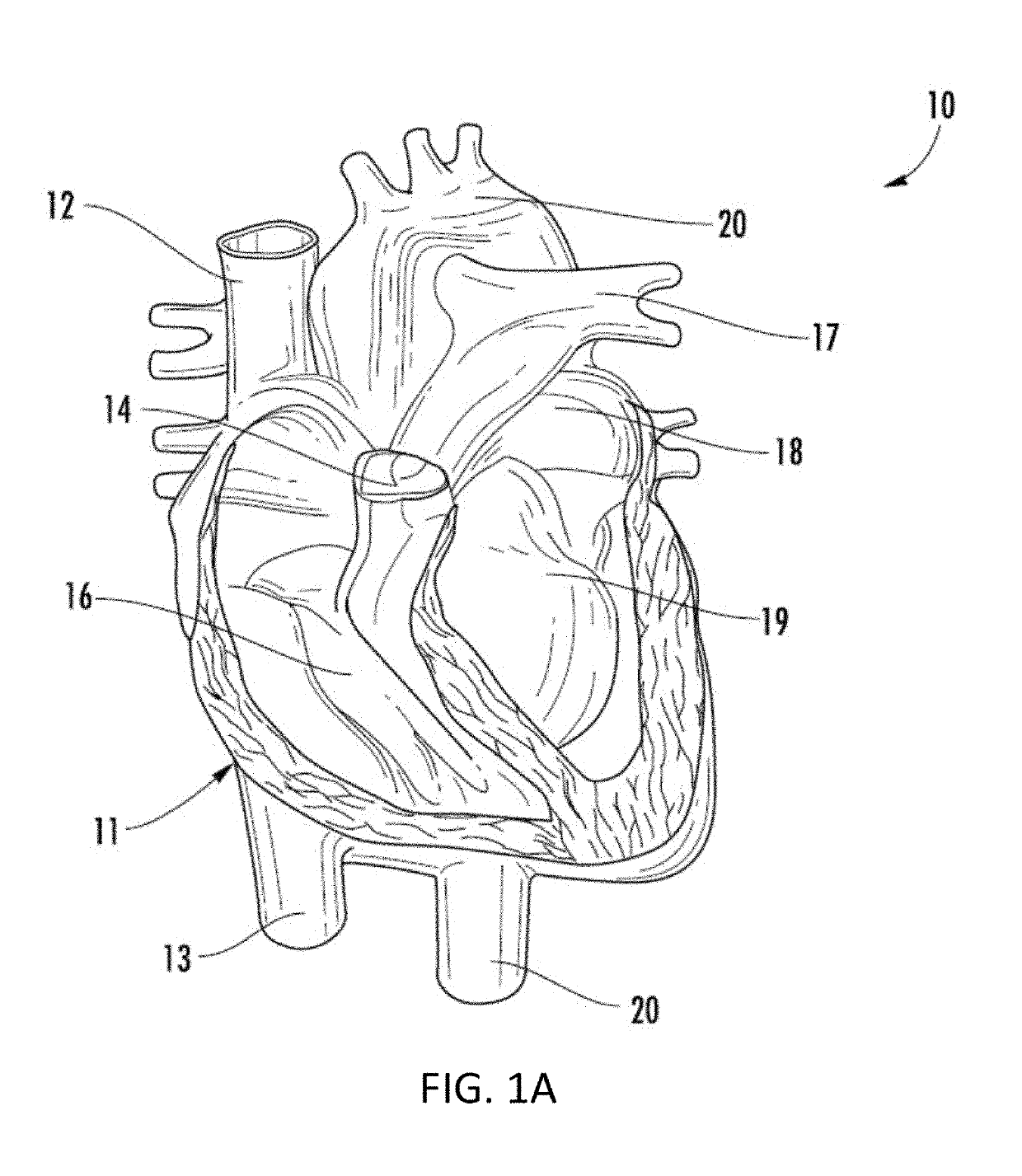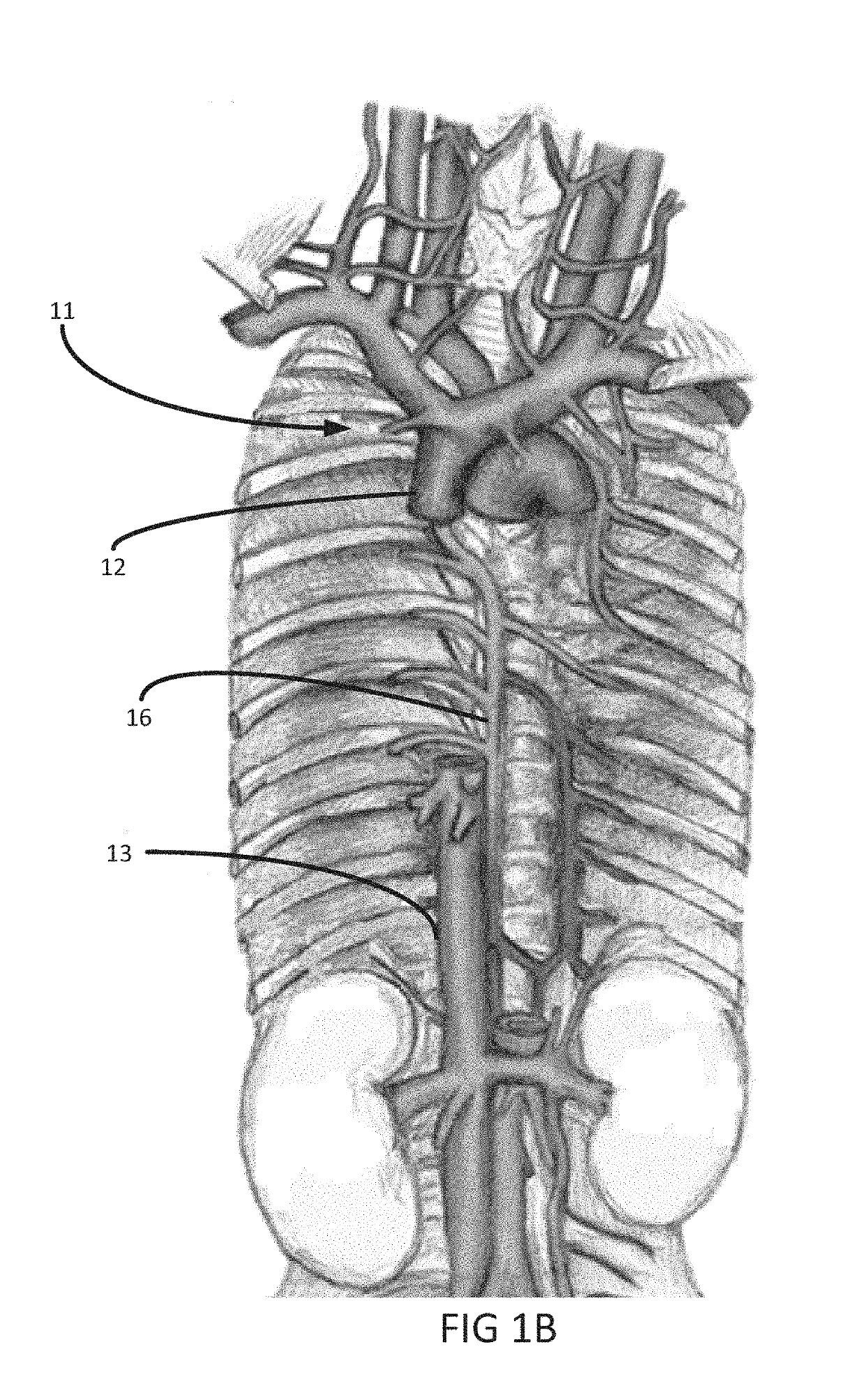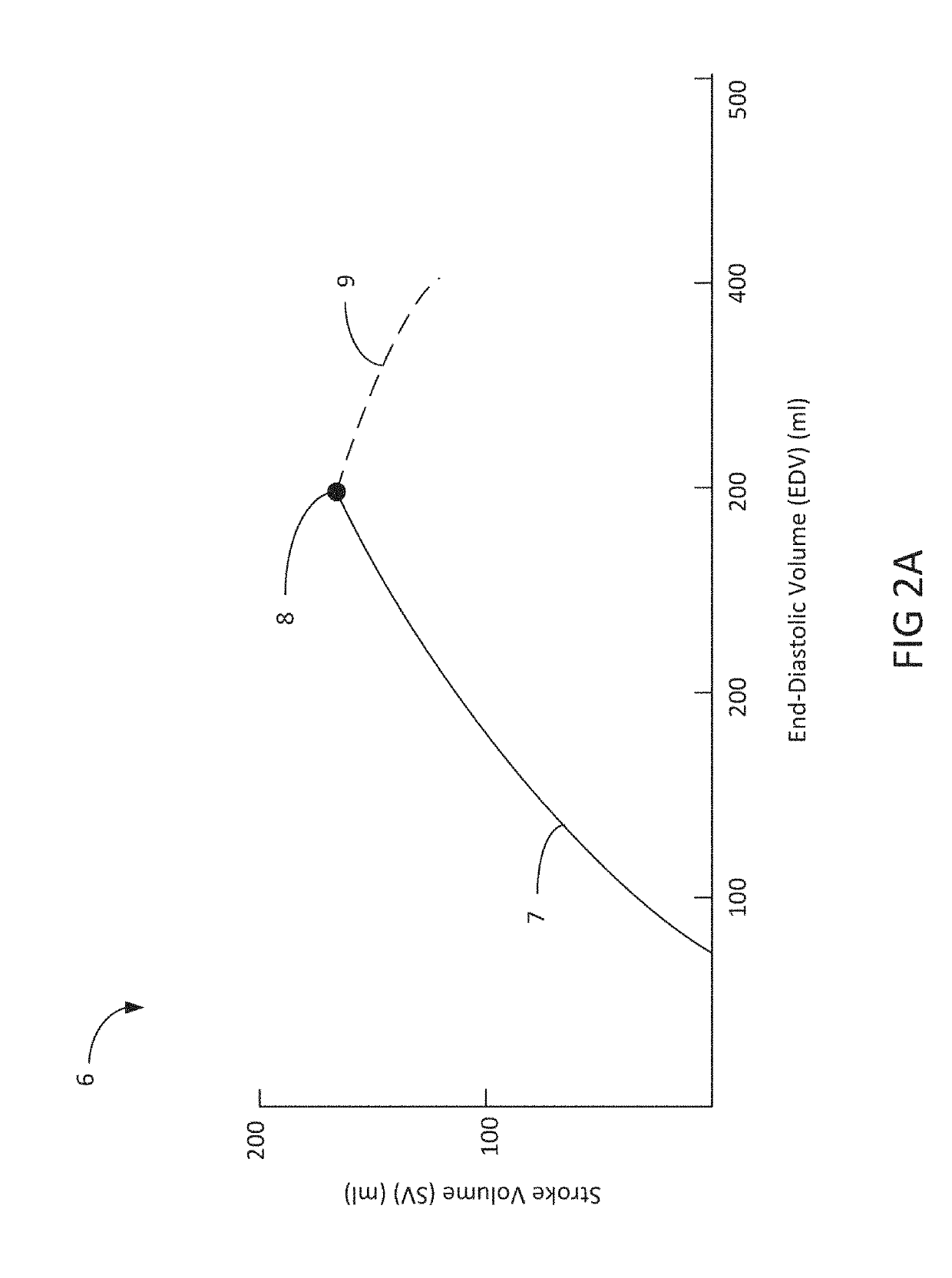Heart failure often results in multiple long-term hospital admissions, especially in the later phases of the
disease.
Absent
heart transplantation, the long term prognosis for such patients is bleak, and pharmaceutical approaches are palliative only.
Consequently, there are few effective treatments to slow or reverse the progression of this
disease.
While the heart can often initially respond successfully to the increased
workload that results from high
blood pressure or loss of contractile tissue, over time this stress induces compensatory cardiomyocyte hypertrophy and remodeling of the
ventricular wall.
This in turn often leads to overworking of the myocardium, such that the
cardiac muscle in the compromised region becomes progressively thinner, enlarged and further overloaded.
Not surprisingly, once a patient's heart enters this progressively self-perpetuating downward spiral, the patient's
quality of life is severely affected and the risk of morbidity skyrockets.
Depending upon a number of factors, including the patient's prior physical condition, age, sex and lifestyle, the patient may experience one or several hospital admissions, at considerable cost to the patient and social healthcare systems, until the patient dies either of cardiac arrest or any of a number of co-morbidities including
stroke,
kidney failure,
liver failure, or
pulmonary hypertension.
Currently, there are no device-based solutions that specifically target a reduction in preload to limit the progression of heart failure.
Pharmaceutical approaches are available as palliatives to reduce the symptoms of heart failure, but there exists no pharmaceutical path to arresting or reversing heart failure.
Moreover, the existing pharmaceutical approaches are systemic in nature and do not address the localized effects of remodeling on the
cardiac structure.
Prior to applicants' invention as described herein, there are no effective commercial devices available to treat this
disease.
Although the
system and methods described in Cedeno appear promising, there are a number of potential drawbacks to such a
system that applicants' have discovered during their own research.
Moreover, full
inferior vena cava occlusion may increase venous congestion within the renal, hepatic, and mesenteric veins; venous congestion is a major cause of renal failure in congestive heart failure patients.
There are several major limitations to approaches that involve partial or full occlusion of the IVC to modulate cardiac filling pressures and improve cardiac function.
Second, the IVC approach described by Cedeno and colleagues depends on several highly variable indices (especially in the setting of congestive heart failure): 1) IVC
diameter, which is often dilated in patients with heart failure; b) intermittent (full or partial) IVC occlusion may cause harm by increasing renal
vein pressure, which reduces glomerular
filtration rates and worsens
kidney dysfunction; c) dependence on the patient's ability to breathe, which is often severely impaired in HF (A classic
breathing pattern in HF is known as Cheynes Stokes
respiration, which is defined by intermittent periods of
apnea where the IVC may collapse and the
balloon will cause
complete occlusion resulting in lower
systemic blood pressure and higher renal
vein pressure); d) if prolonged cardiac unloading is required to see a clinical improvement or beneficial changes in
cardiac structure or function, then IVC occlusion will not be effective since sustained IVC occlusion will compromise
blood pressure and
kidney function.
Fourth, many patients with heart failure have IVC filters due to an increased propensity for deep venous
thrombosis, which would preclude broad application of IVC therapy.
However, there are drawbacks to pharmacologic treatments such as costs and side effects.
 Login to View More
Login to View More  Login to View More
Login to View More 


